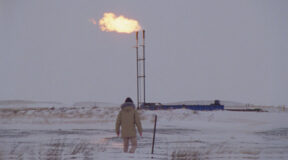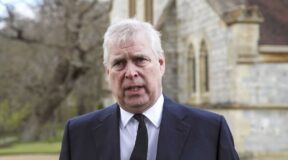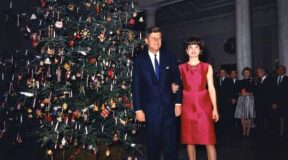In a career that spans more than seven decades, Eva Marie Saint has won an Oscar, played Superman’s mom, and acted alongside screen legends such as Paul Newman, Montgomery Clift and Marlon Brando. A versatile performer, she appeared in comedies (“The Russians Are Coming, the Russians Are Coming”), historical epics (“Raintree County”), social dramas (“On the Waterfront”), and misbegotten superhero films (“Superman Returns”). Saint, who turns 97 on July 4, is one of the last surviving links to Hollywood’s Golden Age, with her style and sophistication serving as a luminous reminder that they “don’t make ’em like they used to.”
Nowhere is this more evident than in “North by Northwest,” where Saint put her own spin on the “Hitchcock Blonde.” It was a role previously filled by the likes of Grace Kelly (“Rear Window,” “To Catch a Thief”) and Kim Novak (“Vertigo”), and one that would later be played by Tippi Hedren in “The Birds” and “Marnie.” Strangely, Saint’s foray into Alfred Hitchcock territory isn’t as celebrated as those others, and that’s a shame. Not only does she provide the requisite icy sex appeal as Eve Kendall, a shadowy secret agent, but she also proves to be much more than a standard damsel in distress. While it’s true that co-star Cary Grant is ultimately called upon to save Kendall in the film’s final moments, Saint’s character is fully capable of pulling the wool over the eyes of sinister villains and usually remains two or three steps ahead of Grant’s hapless Madison Avenue executive Roger Thornhill. It’s also refreshing that during the train seduction sequence between Kendall and Thornhill, it’s Saint who is the more sexually forward of the two (“It’s going to be a long night and I don’t particularly like the book I’ve started,” she purrs at her cabin-mate).
It seems fitting that Saint’s birthday should fall on the same day as that of the U.S., because her cinematic legacy is so tied up with one of the country’s most singular monuments. “North by Northwest” is probably best remembered today for its action set pieces, specifically the sequence where Grant tries to escape a crop duster and the finale, which finds Grant and Saint fleeing James Mason and his henchmen along the face of Mount Rushmore. The filming of that scene, one of the most iconic in movie history, dominated Variety‘s coverage of “North by Northwest’s” production. That was due in large part to a standoff between Hitchcock and the National Park Service and the Department of the Interior about his desire to film at the South Dakota monument. The director had long toyed with the idea of setting an action sequence on the Black Hills statue, reportedly telling associates, “I want to have one scene of a man hanging onto Lincoln’s eyebrows. That’s all the picture I have so far.”
Popular on Variety

He got his chance with “North by Northwest,” but only after the film’s backer, Metro-Goldwyn-Mayer (MGM), promised government officials that no violent sequences would be shot “near the sculpture” or the talus slope. That prohibition extended to any mock-up of Mount Rushmore. As Todd David Epp writes in “Alfred Hitchcock’s ‘Expedient Exaggerations’ and the Filming of North by Northwest at Mount Rushmore,” the agreement was eventually revised to give Hitchcock permission to shoot a chase scene using a recreation of the monument provided that “…the presidents’ faces be shown below the chin line in scenes involving live actors.” No presidential eyebrows were to be harmed during the making of the film.
With Mount Rushmore recreated on the MGM studio lot, Hitchcock, Grant, Saint and company only filmed for a few days in the monument’s parking lot and cafeteria before staging the fight scene in Los Angeles. When officials saw the finished product they were incensed. In a July 15, 1959 article in Variety, headlined “Alf Hitchcock’s ‘Chase’ in Studio Chagrins U.S. Dept. of Interior,” the trade reported that the parks service felt that MGM had gone back on its word. “The movie,” one official said, “is a per se violation of this agreement. We don’t intend to stop MGM from showing the picture, but if we receive sufficient complaints from the public about the desecration of a national shrine, we will have to make the record clear on what the agreement provided and who failed to live up to it.” The department was mostly concerned that viewers would be given the mistaken impression that the scene, which finds Grant’s Thornhill tossing a bad guy off the cliff before police officers gun down another villain, was actually filmed on location instead of in a Culver City soundstage.
In response, the Interior Department insisted that Hitchcock remove a credit line thanking the department and the park service for their “cooperation…in the actual filming of the scenes at Mount Rushmore National Memorial, South Dakota.” That posed some problems as prints had already been shipped when the order came in, but the U.S. government minced no words in threatening to withhold future cooperation. As Variety reported on August 5, 1959, Acting Secretary of Interior Elmer F . Bennett wrote MGM President Joseph R. Vogel, “Because of the experience in this instance, future picture permit applications in the National Park Service areas will receive closer scrutiny than heretofore.”
As for Saint, the Mount Rushmore sequence presented additional problems. She may not have been on location in South Dakota, but she was asked to race across a 30-foot recreation of the statues, a perch that she very easily could have tumbled from.
“I had just given birth two weeks before to our second child. So there I was climbing around. I thought, oh my, I have no fear of heights, but I don’t climb mountains… When I got up there I wasn’t nervous, and Cary was older than I and I thought, oh, if he can do it I can do it,” Saint remembered in a 2000 interview with the Oklahoman.
“Then I looked down, and they were putting mattresses around the circumference of this make of Mount Rushmore,” she added. “Then I got nervous. I thought, well, if I tumble, how am I going to hit my mark on that mattress below? I’m good at hitting my marks on the set, but I didn’t know about this.”
Ultimately, both the film and Saint squarely hit their mark. Thanks to the Mount Rushmore sequence, “North by Northwest” secured its own place in the cinema pantheon, and that’s thanks in no small part to Saint’s calm, cool, and slyly seductive take on the “Hitchcock Blonde.” It’s an unforgettable role played by an unforgettable talent.
optional screen reader
Read More About:
Source: Read Full Article




